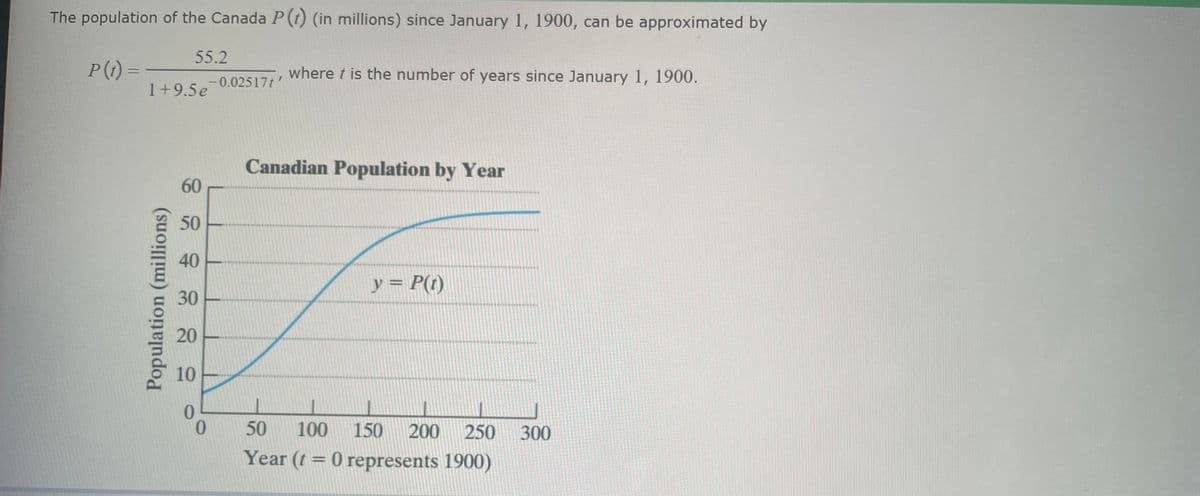Part 2 of 6 (b) Use the function to approximate the Canadian population on January 1, 2030. Round to the nearest tenth of a million. The model approximates that the Canadian population will be approximately million on January 1, 2030. X
Part 2 of 6 (b) Use the function to approximate the Canadian population on January 1, 2030. Round to the nearest tenth of a million. The model approximates that the Canadian population will be approximately million on January 1, 2030. X
Algebra & Trigonometry with Analytic Geometry
13th Edition
ISBN:9781133382119
Author:Swokowski
Publisher:Swokowski
Chapter4: Polynomial And Rational Functions
Section: Chapter Questions
Problem 5T
Related questions
Question

Transcribed Image Text:The population of the Canada P (t) (in millions) since January 1, 1900, can be approximated by
P (t) =
55.2
1+9.5e
Population (millions)
60
50
40
30
20
10
0
-0.02517t"
where t is the number of years since January 1, 1900.
Canadian Population by Year
y = P(t)
50 100 150 200 250
Year (t = 0 represents 1900)
THE
300

Transcribed Image Text:Part: 1 / 6
Part 2 of 6
(b) Use the function to approximate the Canadian population on January 1, 2030. Round to the nearest tenth of a million.
The model approximates that the Canadian population will be approximately
million on January 1, 2030.
X
S
Expert Solution
This question has been solved!
Explore an expertly crafted, step-by-step solution for a thorough understanding of key concepts.
Step by step
Solved in 2 steps with 2 images

Recommended textbooks for you

Algebra & Trigonometry with Analytic Geometry
Algebra
ISBN:
9781133382119
Author:
Swokowski
Publisher:
Cengage

Algebra & Trigonometry with Analytic Geometry
Algebra
ISBN:
9781133382119
Author:
Swokowski
Publisher:
Cengage